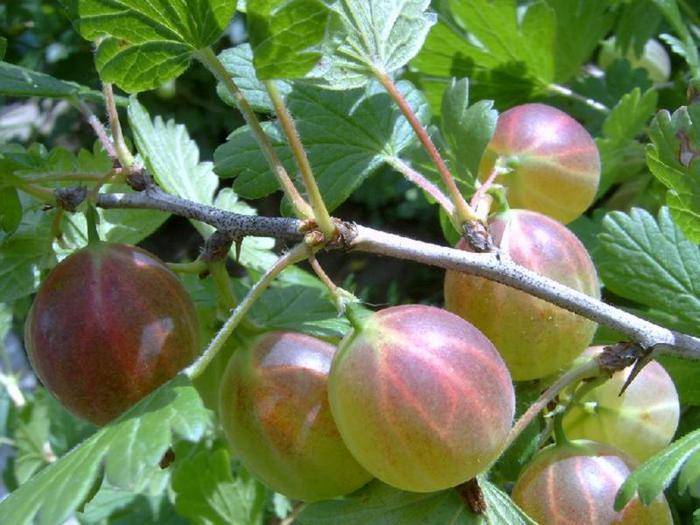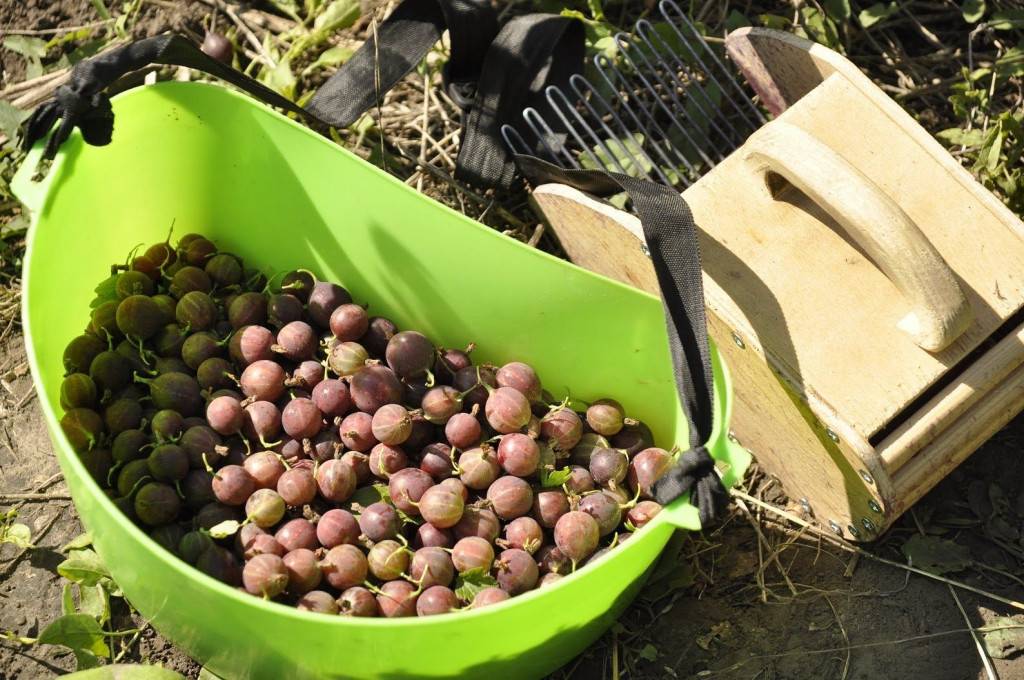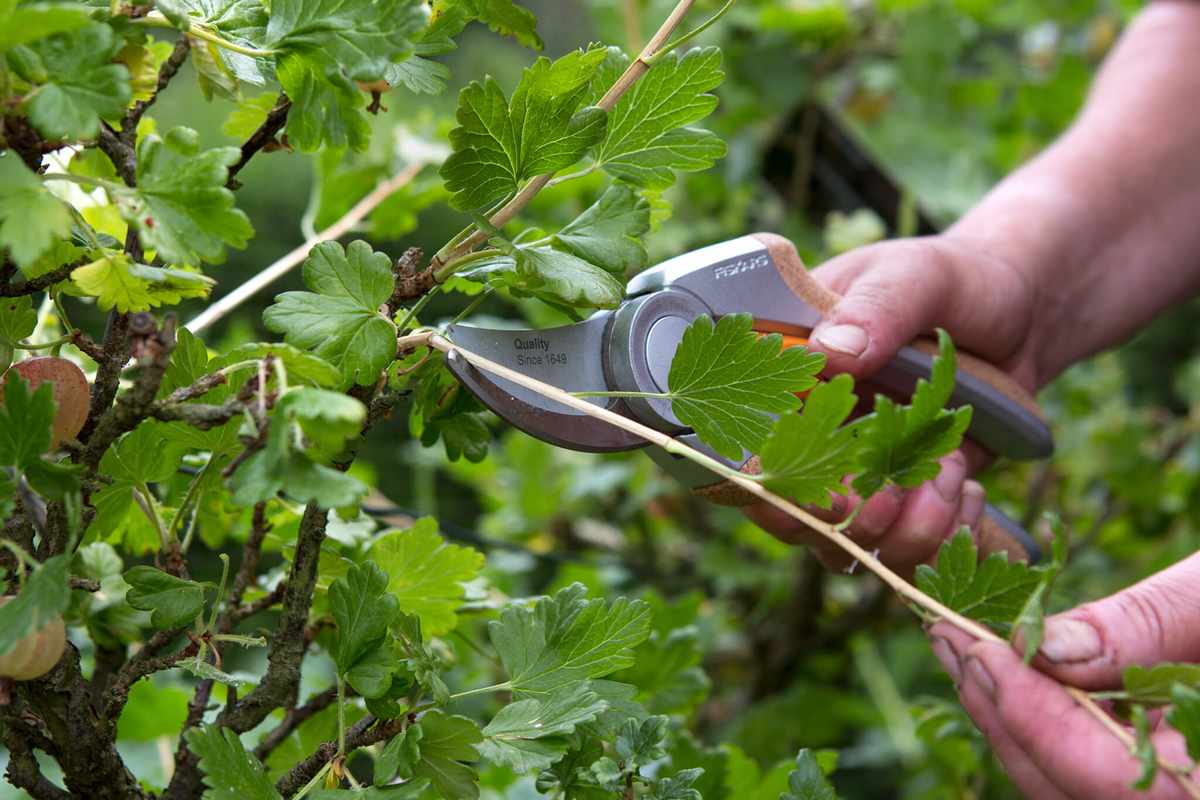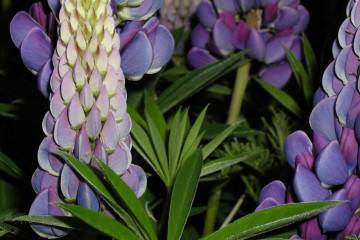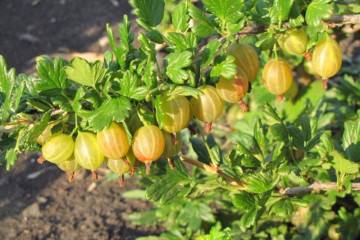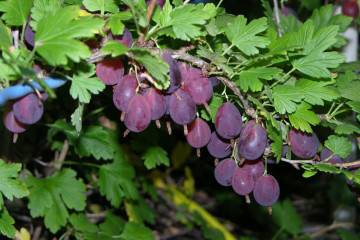When gooseberries ripen: how to pick ripe berries
Content:
Delicious and healthy gooseberries are one of the jewels of summer that every gardener looks forward to. Correct harvesting and storage of crops requires certain knowledge and skills.
When gooseberries ripen
The gooseberry season depends entirely on the specific variety and the climatic conditions in which it is grown. That is why it is possible to indicate the time when the gooseberry ripens with an accuracy of weeks, only in each specific case, but not for the culture as a whole.
All the variety of varieties available for free sale can be conditionally divided by ripening time into early, ordinary and late ones.
Early varieties
This group includes gooseberry varieties that yield in the first half of June. They are recommended for northern regions where summers are very short and for the earliest berries.
- Strawberry. The variety was bred in 2009 at the All-Russian Research Institute of Breeding of Fruit Crops on the basis of African and Souvenir varieties. Berries 2.7-5.5 g each, not pubescent, light green with large dark red spots, thin skin. Their sweet and sour taste with a strawberry hue is rated at 4.9 points.
- Pink - grade 1971. Zoned for the Central and East Siberian regions. Raspberry-pink, non-pubescent berries weighing 5-10 g with a weak waxy bloom have a rating of 4.9 in taste. It is appreciated for its high self-fertility and keeping quality.
- Salute - the variety was entered in the State Register in 1994. Dark red oval or pear-shaped berries, 3-7 g each, with a very dense skin. The pulp is sweet and sour with a sugar content of up to 9%. Tasting score - 4.8 points.
- Kazachok - grade 2006 Bred in the All-Russian Research Institute of Horticulture named after I. V. Michurin. Has slightly conical or oval berries weighing 2.9-4 g. Color is dark purple, almost black. The skin is of medium thickness. Sweet and sour dessert taste is rated at 4.8 points. Sugar content - up to 12.2%.
- Kubanets - the variety was included in the State Register in 1997. Oval berries weighing 6-8 g without pubescence are light green in color. Sugar content - up to 8.8%. The taste is sweet and sour. The purpose is universal.
- Spring is a self-pollinated variety bred at the Moscow Fruit and Berry Station and entered into the State Register in 2001. Productivity is 8-11 kg per bush. Round green berries weighing 5 g each have a sweet and sour taste. After ripening they easily fall off the bush.
Regular
This group of varieties matures on average in the first half of July. It included:
- Senator is a thornless variety. Bred in 1995 at the YUNII of horticulture and potato in Chelyabinsk. Round dark red berries weighing 6-8 g with almost no seeds earned a tasting score of 4.9 points.
- Seraphim - the variety was bred in 1998 at the Leningrad Fruit and Vegetable Experimental Station. Oval bright red berries weighing 4-6 g with a thin, strong skin. Tasting score - 4.5 points. Sugar content - up to 8.4%.
- Large - the variety was entered in the State Register in 1974 and zoned for the West Siberian region. Berries for universal use weighing 2-3 g of oval shape with dark red skin with a waxy bloom.Sugar content - up to 8.4%.
- Muromets - the variety was included in the State Register in 1974 and obtained at the Minusinsk Experimental Station of Gardening and Melon Growing. Zoned across the East Siberian region. Berries weighing 2.6-4.2 g are green with slight pubescence. The peel is of medium thickness, the taste is sweet and sour. Sugar content - up to 5.8%.
When to pick late gooseberries
The berries of these varieties are harvested from early to mid-August. The most famous are:
- Spinefree is a thornless variety. Dark red berries with green veins weighing 4-6 g sweet and sour for universal use. Frost resistance - up to -35 ° С.
- Charm - 2003 variety. Berries weighing 5 g each are oval in shape with dense skin and slightly pubescent. Inside - up to 28 seeds. Sugar content - up to 10%.
- Chelyabinsk is a slightly thorny variety with beautiful dark red (cherry) spherical berries weighing 3-7 g. Sugar content - up to 13%. Productivity - up to 6-8 kg per bush.
When gooseberries ripen in different regions
The dates indicated by the manufacturers of the planting material when the gooseberries ripen, always have to be adjusted, taking into account the peculiarities of the climate of the region where the gooseberries will grow.
When gooseberries ripen in southern latitudes
In the south, the first berries can be picked in the first ten days of June. In this case, we are talking about full ripening, that is, the crop is 100% ready for processing and fresh consumption.
When the gooseberries ripen in the middle lane
Early varieties are practically not planted here, since there is a high probability of bad weather in early summer. In such conditions, early berries can remain sour due to lack of sun. Preference is given to medium varieties, which have time to ripen by mid-July, as well as late ones (ripening in August).
Gooseberries: ripening time in the Urals and Siberia
For these regions of Russia, almost all known varieties of middle and early ripening are suitable, provided that the crown easily bends to the soil. Due to harsh winters, annual shoots often freeze out if left without snow cover. Therefore, when choosing a seedling, more attention is paid to the flexibility of its crown.
How to harvest gooseberries for different needs
Depending on how exactly the berries will be harvested, they are harvested in varying degrees of ripeness. If it is planned to send them for processing (compotes, jam, drying), then it is quite possible to limit ourselves to technical ripeness. At this stage, the berries have already acquired a mature color, but still firmly adhere to the stalks. For fresh consumption, wait for the final ripening (about a week).
How to pick gooseberries correctly
Based on the size of the plantation, a suitable harvesting method is selected. Fresh berries are usually harvested by hand to prevent damage.
Hand picking gooseberries
Pickers wear long sleeves and gloves to protect their hands from scratches. The berries are carefully picked from the branches along with the tails so that they can stay fresh longer.
Mechanical fixtures
In horticultural farms, vibrators are used to collect berries from bushes. This device shakes off with vibration not only fruits, but also leaves. Under the crown, the soil is lined with a film, with which all the fallen is poured into baskets, and then sorted.
Other fixtures
There are special combs that are worn on the hands.
Special thimbles with protruding teeth allow you to pick berries from the branches.The disadvantage of this method is that the fruits come off the tails, so they must be processed immediately after collection.
Processing the plant after harvest
When the harvest season is over, it is time to take care of the bushes to ensure abundant fruiting next year. You will need to perform a number of standard activities:
- The soil under the gooseberry must be thoroughly cleaned of fallen leaves and weeds.
- The bushes are sprayed with fungicides against diseases and insecticides against pests. It is recommended to use complex preparations and carry out treatments at intervals of 7 days in 2-3 doses, starting from the end of August.
- From the first decade of September, potash-phosphorus fertilizers are applied.
- Sanitary pruning is carried out, deformed and curved branches are cut out.
- After the first snow, hilling is performed, raking snowdrifts onto the bushes, which are the best protection against frostbite of the crown.
Harvest storage
Immediately after the berries are harvested, they are processed and removed for long-term storage. Properly processed gooseberries will be a valuable vitamin supplement in the family's diet until the next harvest.
Shelf life of gooseberry berries
If you want to eat fresh berries as long as possible, they are harvested in a state of technical ripeness (slightly unripe). After that, they are spread in boxes with a layer of no more than 5 cm and put away in a dark room with an air temperature of 0 to +4 ° C. In such conditions, any gooseberry can be stored for up to 2 months.
Processed and preserved in sealed containers, berries can be stored without losing their taste for at least 12 months (jam, compote, juice, jam). Alcoholic tinctures and wine, when properly sealed and at temperatures from 0 to + 2 ° C, do not have a shelf life and can retain their taste and aroma for years.
Frozen gooseberries can be stored until next summer, but it is recommended to use the berries for cooking compotes and in the form of pie fillings for 6 months.
Storage methods
In addition to canning, freezing and fresh consumption, gooseberries can be preserved for the winter by other methods. Dried berries are very beneficial to health. To do this, they are laid out at the height of summer in attics, where it is hot, dry, no insects and excellent ventilation. Electric dryers are commercially available to speed up the process for processing large volumes.
Fresh berries can be stored in the basement for up to 2 months, but there is another way. Gooseberries are chopped with a meat grinder or blender, mixed with sugar in the proportion of 2 parts of berries and 1 part of sugar. The mixture is laid out in small glass (sterilized) jars, covered with nylon lids and put into the basement or refrigerator. Shelf life is 6-8 months without loss of taste and aroma.
In general, berries with more acid than sugar are believed to last longer. Therefore, for long-term storage in freeze or in sugar, you should not wait for the final ripening of gooseberries; it is better to pick the fruits slightly unripe in order to enjoy their pleasant refreshing taste in winter for a longer time.
Properly harvested and processed gooseberries will add variety to the daily menu and help improve sleep, digestion, and maintain overall health.

